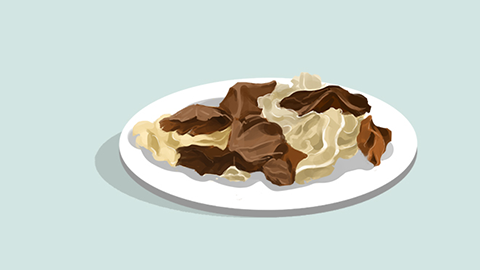What is incompatible with white fungus (Tremella)?
White fungus generally refers to Tremella fuciformis (also known as snow ear or silver ear fungus). Tremella fuciformis may be incompatible with certain foods such as persimmons, spinach, pork liver, and white radish. Detailed explanations are as follows:

1. Persimmons
Unripe persimmons contain high levels of tannic acid, which may combine with proteins in Tremella fuciformis to form indigestible precipitates, potentially causing indigestion or gastrointestinal discomfort.
2. Spinach
Spinach contains large amounts of oxalic acid, which may react with calcium in Tremella fuciformis to form calcium oxalate, a compound that is difficult for the human body to absorb. This not only reduces the nutritional value of Tremella fuciformis but may also increase the risk of developing kidney stones.
3. Pork Liver
Pork liver is rich in iron and vitamin A, while Tremella fuciformis contains a certain amount of copper. When consumed together, copper may react with iron and vitamin A from the pork liver, affecting the body's absorption of these nutrients.
4. White Radish
Tremella fuciformis contains natural photosensitive substances. When consumed together with white radish, the activity of these photosensitive substances may significantly increase, potentially damaging the skin and causing symptoms such as itching, rashes, or even increasing the incidence of dermatitis.
5. Spinach
Spinach contains high levels of oxalic acid, while Tremella fuciformis is rich in vitamin C. When oxalic acid and vitamin C meet, they may react and form substances that are difficult for the body to absorb, thereby reducing the nutritional value of vitamin C.
Although these foods are considered incompatible with Tremella fuciformis, it is not absolutely forbidden to consume them together. It is recommended that in daily diets, individuals should moderately combine various foods, maintain dietary diversity, and pay attention to their body's reactions. If discomfort occurs after consuming certain combinations of foods, prompt medical consultation is advised.




